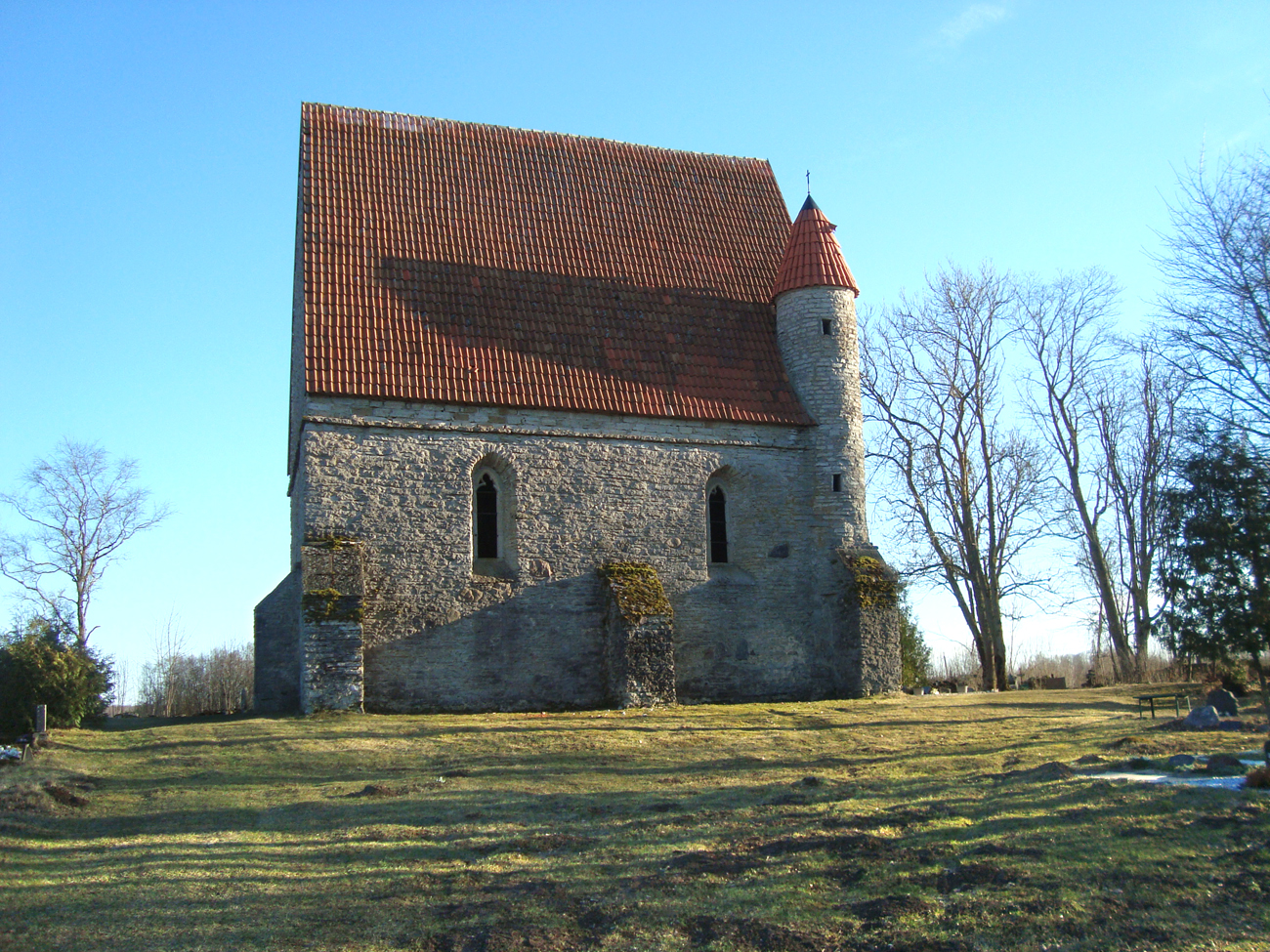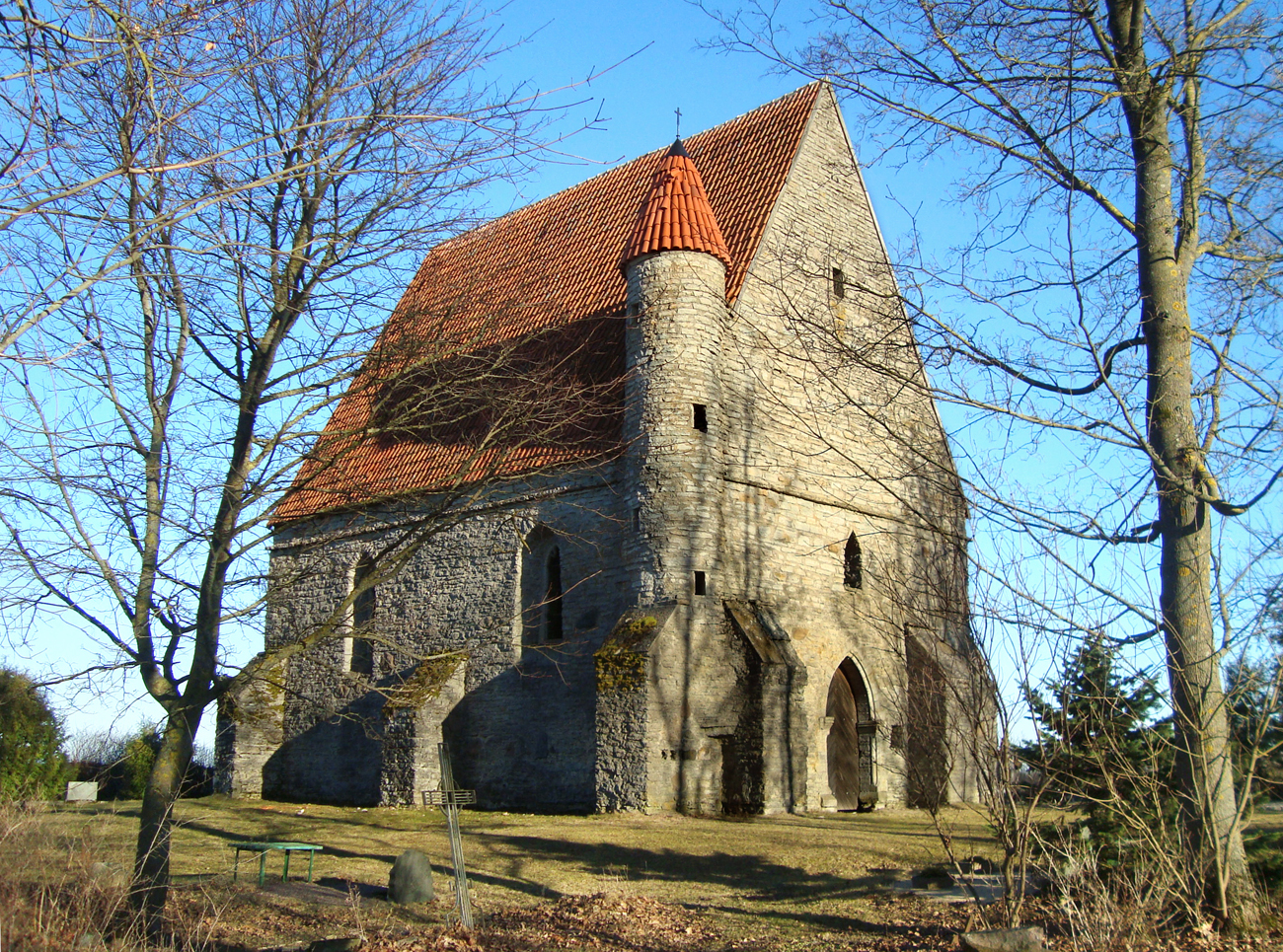Saha St Nicholas chapel
In 1895, the churchwarden of Jõelähtme church, Jüri Vitismann wrote: „In olden times when our people were still pagans, a ship was caught in a storm in the sea. The sailors believed they were doomed... In fear of death they promised that should they come out of this alive, they would build a church. The sailors reached the shore safely and began building the promised church...”
This tale was told by Jüri Vitismann’s grandmother Ann Kuusman.

In 1223, only a cemetery was mentioned here, although a wooden chapel could well have stood here before. According to legends, the chapel was established by Bishop Fulco. The bishop visited Estonia at least twice. His mission was to spread Christianity. In 1171, the Pope himself appointed as Fulco’s assistant Monk Nicholas, who was of Estonian origin but from Stavanger. The same Augustine monk can be regarded as the first known Estonian intellectual. The Saha chapel can thus be seen as a monument to peaceful Christianisation as well as to Estonian-biased education.
Saha chapel was mentioned in „The Danish Census Book” in 1241. It probably stood on an ancient Estonian holy site. Saha chapel was among the first strongholds of Christianity in Estonia. The wooden church was burned down during the 1223 uprising.
Today's chapel was built during the first half of the 15th century, at the same time as the Pirita convent, and is remarkably similar to the convent church. The size of Saha chapel deserves a mention as well. An unusual cavity for a platter of holy water is in the wall by the main portal of the chapel, and the ground plan of the chapel is quite unusual too – it is not a rectangle, but a rhomboid. The southern door of the chapel is always open to visitors.

From the day we started the pilgrimage route, we have walked through that door several times, both in summer and in winter. The nuns and friends of the Pirita convent have the wonderful tradition of visiting Saha chapel over Christmas. We light the candles, we read a prayer, we stand for awhile in quiet contemplation – and enjoy a very special Christmas mood.
Prayer for Christmas Eve
Frank Borman
O God, we pray, give us the gift
to see Your love in the world,
despite its reigning frailty.
Give us faith to trust Your goodness,
despite our stupidity and weakness.
Give us knowledge so we can continue
to stay in prayer with understanding hearts.
And open our eyes to see what everyone of us
can do for peace in the whole world,
what Your son Christ announced in his message.
Amen.
Saha chapel bears the name of St Nicholas
St Nicholas, bishop of Myra, was a Christian saint who lived in the 4th century in Asia Minor and who died in 343.
Nicholas was a bishop in the best sense of the word – he was father to orphans, helped the poor, defended those in distress, and consoled the worried and frustrated.
Nicholas was the patron saint of virgins, sailors, prisoners, merchants, bakers and children who gave them presents at Christmas-time. As the patron saint of children, the person and legends about Nicholas were partly a model for the character of Santa Claus.
The cult of St Nicholas spread in Estonia together with Catholic Hansa culture. Viru-Nigula and Lääne-Nigula churches are dedicated to him, as are churches in the Hanseatic towns of Tallinn and Pärnu and holy places in Haapsalu, Põltsamaa, Karja and Kirbla.
The commemoration day of St Nicholas is celebrated twice a year, on 6 December and on 9 May.
Janek Shafranovski and Daila Aas
Sources
https://dea.digar.ee/cgi-bin/dea?a=d&d=joelahtme20130901.2.9.4
https://register.muinas.ee/public.php?menuID=monument&action=view&id=2747
https://kirikud.muinas.ee/?page=1&subpage=1542&arhiiv=1847
